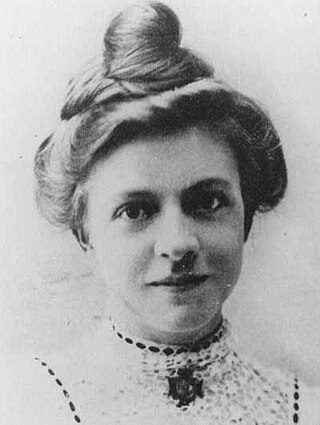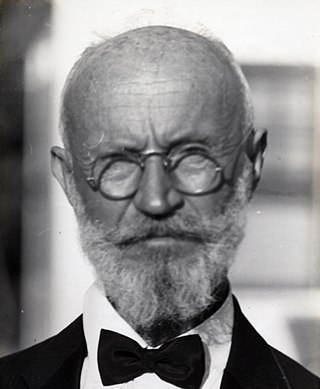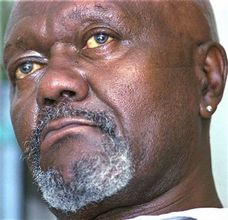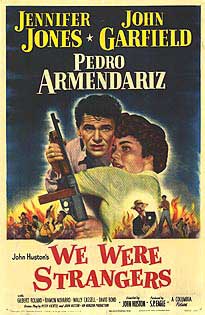Related Research Articles

Havana is the capital and largest city of Cuba. The heart of the La Habana Province, Havana is the country's main port and commercial center. The city has a population of 2.3 million inhabitants, and it spans a total of 728.26 km2 (281.18 sq mi) – making it the largest city by area, the most populous city, and the fourth largest metropolitan area in the Caribbean region.

Hachikō was a Japanese Akita dog remembered for his remarkable loyalty to his owner, Hidesaburō Ueno, for whom he continued to wait for over nine years following Ueno's death.

Reveille is the official mascot of Texas A&M University. Students adopted the first Reveille, a mixed-breed dog, in 1931. The cadets raised $100 during World War II to make Reveille a general, as part of a fundraiser for the K-9 Corps. Reveille is the highest-ranking member of the Texas A&M Corps of Cadets.

Clara Louise Maass was an American nurse who died as a result of volunteering for medical experiments to study yellow fever.

Georg Carl Tänzler (also known as Count Carl von Cosel, was a German-born radiology technologist at the Marine-Hospital Service in Key West, Florida. He developed an obsession for a young Cuban-American tuberculosis patient, Elena "Helen" Milagro de Hoyos, that carried on well after her death. In 1933, almost two years after her death, Tanzler removed Hoyos' body from its tomb, and lived with the corpse at his home for seven years until its discovery by Hoyos' relatives and authorities in 1940.

Vedado is a central business district and urban neighborhood in the city of Havana, Cuba. Bordered on the east by Calzada de Infanta and Central Havana, and on the west by the Alemendares River and Miramar / Playa district, Vedado is a more modern part of the city than the areas to the east, developed in the first half of the 20th century, during the Republic period. In 2016 it was described by one commentator as the city's "most affluent" section. The main street running east to west is Calle 23, also known as "La Rampa". The northern edge of the district is the waterfront seawall known as the Malecón, a famous and popular place for social gatherings in the city. The area popularly referred to as 'Vedado' consists of the wards of Vedado, Rampa, Vedado-Malecón and Carmelo, all in the municipality of Plaza de la Revolución.

Pedro Luis Boitel was a Cuban poet and dissident who opposed the governments of both Fulgencio Batista and Fidel Castro. In 1961, he was sentenced to 10 years in prison.

Infanta Eulalia, Duchess of Galliera, was the youngest and last surviving child of Queen Isabella II of Spain and Francisco, Duke of Cádiz, and the youngest sister of King Alfonso XII. She authored memoirs that were controversial for their critical perspective and allegations about the political policies of various Spanish and foreign governments.

El Cementerio de Cristóbal Colón, also called La Necrópolis de Cristóbal Colón, was founded in 1876 in the Vedado neighbourhood of Havana, Cuba to replace the Espada Cemetery in the Barrio de San Lázaro. Named for Christopher Columbus, the cemetery is noted for its many elaborately sculpted memorials. It is estimated the cemetery has more than 500 major mausoleums. Before the Espada Cemetery and the Colon Cemetery were built, interments took place in crypts at the various churches throughout Havana, for example, at the Havana Cathedral or Church Crypts in Havana Vieja.

José Villalta Saavedra was a Cuban sculptor. One of the first native Cuban sculptors, Villalta was a mulatto born in Havana. Thanks to private patrons, he was able to train in Europe, first in Canarias (Spain) and then in la Reale Accademia di Belle Arti di Carrara. He worked in Italy and Cienfuegos.

William Lee Brent was an American member of the Black Panther Party and defector, best known for hijacking a passenger jet and diverting it to Cuba in 1969, where he spent the last 37 years of his life in exile.
Germán Pinelli was a Cuban journalist and actor.
Beatriz Azurduy-Palacios was a Bolivian motion picture director. She was married and worked with Jorge Sanjinés for over 28 years.

We Were Strangers is a 1949 American adventure drama film directed by John Huston and starring Jennifer Jones and John Garfield. Set in 1933, the film concerns a group of revolutionaries attempting to overthrow the Cuban government of Gerardo Machado. The story is based loosely on an episode in Robert Sylvester's novel Rough Sketch and draws on historical events.

The Espada Cemetery was located in the Barrio of San Lazaro approximately a mile west of the city walls, near the cove of Juan Guillen and close to the San Lázaro Leper Hospital. In use from 1806 to 1878, the Espada Cemetery was the first public burial place designed and constructed in Havana; prior to the cemetery, the Havana custom had been to bury the dead in the vaults of the churches such as Iglesia del Espíritu Santo in Havava Vieja. It was named after the Bishop incumbent at the time of design, José Díaz de Espada y Landa. Its boundaries included the present streets of San Lázaro, Vapor, Espada, and Aramburu. Despite being officially called Campo Santo, the people of Havana referred to the cemetery as el Cementerio de Espada. The cemetery was closed in 1878 and demolished in 1908, only a small wall remains of the original structure.
Beatriz Patricia Ximena Allende Bussi was a Chilean Socialist politician, revolutionary and surgeon. She was the daughter of former president of Chile Salvador Allende and his wife, Hortensia Bussi.

Montparnasse Cemetery is a cemetery in the Montparnasse quarter of Paris, in the city's 14th arrondissement. The cemetery is roughly 47 acres and is the second largest cemetery in Paris. The cemetery has over 35,000 graves and approximately a thousand people are buried here each year.

Candelaria Figueredo was a Cuban patriot who fought in the Cuban struggle for independence from Spain.
André Marcel Voisin was a French biochemist, farmer and author best known for developing the theory of Rational Grazing. He also lectured extensively on his theories in many parts of the world. His books have been translated into 18 languages and reprinted many times.

The Msida Bastion Historic Garden, also Msida Bastion Cemetery or Msida Bastion Garden of Rest is a former Protestant cemetery in Floriana, Malta, in use from 1806 till 1856. It was restored and reopened as a garden in 2002. It is listed in the National Inventory of the Cultural Property of the Maltese Islands under number 52, as a Grade 1 Monument. Currently, Din l-Art Ħelwa are the caretakers of the Msida Bastions with a team of over 25 volunteers coordinated by the garden's Warden, all aiding in the general upkeep and research of the site.
References
- ↑ "JEANNETTE RYDER, BULLFIGHT FOE, DIES; One-Time Butt of Ridicule in Cuba, She Saw Laws Enacted Prohibiting Sport She Fought". The New York Times. 1931-04-12. ISSN 0362-4331 . Retrieved 2021-08-06.
- ↑ Robinson, Circles (2015-04-20). "Jeannette Ryder Remembered in Cuba". Havana Times. Retrieved 2021-08-06.
- ↑ Cuba, Author Translating (2012-05-12). "Tomb of Mrs. Jeannette Ryder Turns into the Tomb of her Loyal Dog Rinti / Wendy Iriepa and Ignacio Estrada". Translating Cuba. Retrieved 2021-08-06.
{{cite web}}:|first=has generic name (help) - ↑ "Jeannette Ryder y el Bando de Piedad". www.radiohc.cu (in Spanish). Retrieved 2021-08-06.